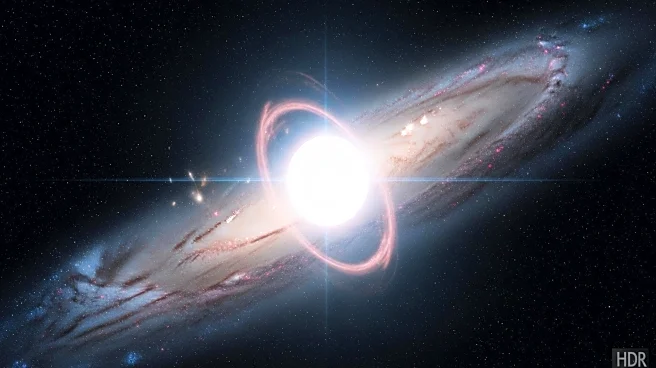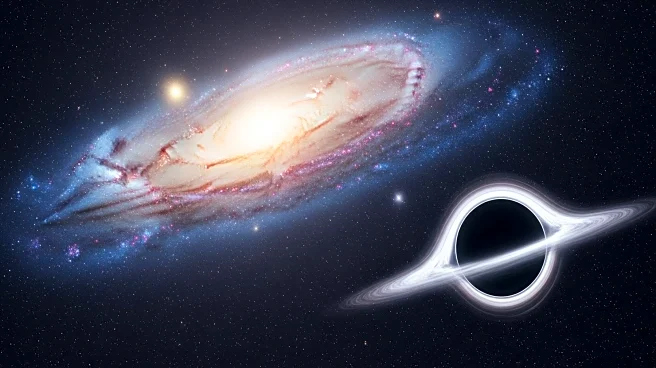What's Happening?
Astronomers have identified a rare cosmic alignment involving a dark matter halo that explains an unusual fifth point in an Einstein Cross, a phenomenon where light from a distant galaxy is bent by the gravity of foreground galaxies, creating multiple images. The discovery was made using data from the Northern Extended Millimeter Array (NOEMA) in the French Alps and the Atacama Large Millimeter/submillimeter Array (ALMA) in Chile. The Einstein Cross typically displays four points of light, but in this case, a fifth point was observed, suggesting the presence of a massive, invisible dark matter halo. This finding allows astronomers to study both the distant galaxy HerS-3 and the dark matter affecting its light.
Why It's Important?
This discovery is significant as it provides a new method to study dark matter, an invisible substance that constitutes most of the universe's mass. Understanding dark matter is crucial for comprehending the universe's structure and evolution. The ability to observe the effects of dark matter through gravitational lensing offers insights into its properties and distribution. This research not only enhances our knowledge of dark matter but also allows for detailed study of distant galaxies, potentially revealing new cosmic phenomena and contributing to the broader field of astrophysics.
What's Next?
Future observations may uncover additional features of the distant galaxy HerS-3, such as gas flows, which could further confirm the magnifying effects of dark matter. Continued research in this area could lead to more discoveries about the nature of dark matter and its role in the universe. Astronomers may also use similar methods to study other cosmic phenomena, potentially leading to breakthroughs in understanding the universe's hidden components.
Beyond the Headlines
The study of dark matter through gravitational lensing opens up ethical and philosophical questions about the nature of the universe and our place within it. As scientists uncover more about these invisible forces, it challenges existing paradigms and encourages a reevaluation of our understanding of reality. This research also highlights the importance of international collaboration in advancing scientific knowledge.










